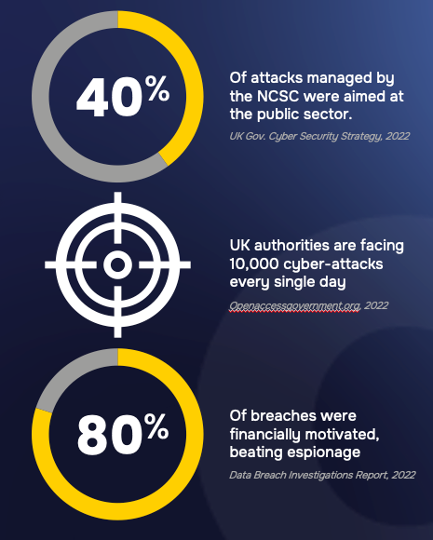Local government is high on the list of targets for malicious actors that want to disrupt government functions and undermine public services. And with large digital estates, legacy IT, and small security teams, cyber-attacks are successfully slipping through the cracks. In the last five years alone, local authorities lost £10 million to cyber-attacks including money paid to hackers, legal costs, and regulatory fines.
With the both the number of attacks and level of sophistication increasing, the threat to public sector data has never been so high. It’s essential to find new ways of keeping data secure, whilst still keep budget and resource limitations in mind.
One approach that some organisations are taking is ‘zero-trust’.
Zero Trust is a security model that requires strict identity verification for every person and device trying to access resources, regardless of their location – whether you’re working from home or sitting within the network perimeter.

The cloud security platform both keeps pace with and enables change, adapting as healthcare organisations add new services or adopt new applications.
Censornet helps keep Protected Health Information (PHI) and Personally Identifiable Information (PII) secure, whilst empowering organisations to meet their security and regulatory compliance obligations.
Data Security is embedded throughout the platform with keyword lists that can be applied to inbound and outbound email, information typed into web forms or posted on social media, and to the content of files associated with cloud application activity such as upload, share, attach or send.
With in-built intelligence feeds identifying, assessing, and processing over a billion threats per day across email, web, cloud applications and identity.
One Integrated Security Platform designed in the cloud to fight evolving cyber-threats across email, web, cloud applications and identity in a perimeter-less world.
Drive cyber security skills through automated Security Awareness Training with deep analysis of engagement, completion, and risk scores on a company and individual level.



If you wish to chat to someone about our products or services please contact our UK office on the number below:
0845 230 9590
Adding {{itemName}} to cart
Added {{itemName}} to cart